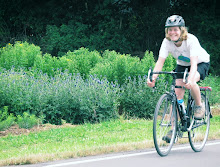After two hours on bumpy, dusty roads, I arrive at a modestly sized dwelling built on a forested hill. If Mushtaq has brought me to the right place, this is the homestead of Sunita Rao, one of the founding trustees of Vanastree who will be my job supervisor, cultural coach and teacher during the course of the internship. I’m the only intern at this site, and she’s the only member of the organization who works full time in the office. She’s built her home as a learning center and a comfortable place for Westerners to live, so it will serve as my home base for the next twelve weeks.
Luckily, I take a liking to Sunita – and her farm – immediately. With its traditional mud-and-tile construction and the terraced garden below, the house first looks like a trendily rustic eco-resort. A woman calls from inside over the sound of excited barking.
“Tuula! You must be exhausted!” Her head passes by the kitchen window and I hear undecipherable words addressed to the dog. Looking a bit ruffled, she emerges from the kitchen. “You and Scrabble will become friends eventually,” she informs me. From the back of the house, Scrabble agrees vociferously. Other than that, no introductions are necessary; we’ve been emailing each other for months working out the logistics of my stay.
The first item of business is the tour. Sunita acquired this piece of land seven years ago to create an ecologically sound homestead, where she would build the collective that would eventually become Vanastree while running an outdoor-based learning center for students. The house is simple but comfortable, featuring western and Indian-style toilets, a dining room table (another western invention), a stove that runs off biogas and potable water pumped from a well. Above her desk in the small living room hangs a scroll with a poem by the Dalai Lama, entitled “The Paradox of our Age”. It sums up the philosophy behind her home and work quite nicely:
We have bigger houses, but smaller families:
more conveniences, but less time...
We have become long on quantity,
but short on quality.
These are times of fast foods,
but slow digestion...
It is a time
when there is much in the window,
but nothing in the room.
[There’s more, I recommend Googling it.]
In the case of my living quarters, there is much jungle in the large windows and nothing but a king-sized bed and a writing table in the room. Which couldn’t have been more perfect.
Next, we take a short walk around the homestead, starting with the forest home garden. A home garden, basically, is just what it sounds like – a large or small vegetable patch that provides produce for a family and, on a larger scale, food security for much of rural Southeast Asia. Agroforestry is the orchard side of a home garden, in which the owner grows crops and trees for harvest under the jungle canopy, maintaining forest habitats while providing a side source of income and sustenance. Agroforestry can also be practiced on a larger scale, with crop trees forming both the canopy and the undergrowth.
Sunita’s plot of land is still in the process of recovery from India’s shoddy forestry management over the last few decades. As we walk the path around the property in the fading light, she points out the invasive eupatorium plants and other non-native shrubs. Teak and eucalyptus are among the cash crops grown in this region, and when those trees are harvested, leaving the ground bare, invasives swiftly move in. Sunita has nearly eradicated all the undesirables, but as any gardener knows, the process of weeding is neverending.
She also shows me the young trees she’s planted to make the acre of land she’s actively managing not just a forest but a forest garden – cinnamon, mango, various medicinal trees I’ve yet to remember the names of. The last stop is the cowshed, which no good Indian home (outside of the city, anyway) is complete without. With two cows, Sunita has enough milk, cheese, butter and yogurt for herself, her farmhand, his family, and some to spare. In addition, they provide the biogas that runs the stove in her house, through a relatively simple system that collects methane from the manure in an underground tank before piping the slurry into her compost pit.
After dinner of traditional dhal and rice – hungrily scooped up with our fingers in Indian style – I have one more thing to take care of before sleeping. Borrowing Sunita’s cell phone, I hike back up the hill to a spot she’s informally named “cell phone point”. It’s the only place on her land where she gets a signal. Squinting to see the numbers through the monsoon rain that is now falling, I dial my mom, who hadn’t heard from me since I left three days ago. Even after having come so far to escape the madcap world at large, or perhaps because I felt so removed, I am incredibly grateful for the technological convenience and the relived voice on the other end of the line.
Thursday, September 11, 2008
Subscribe to:
Post Comments (Atom)




No comments:
Post a Comment